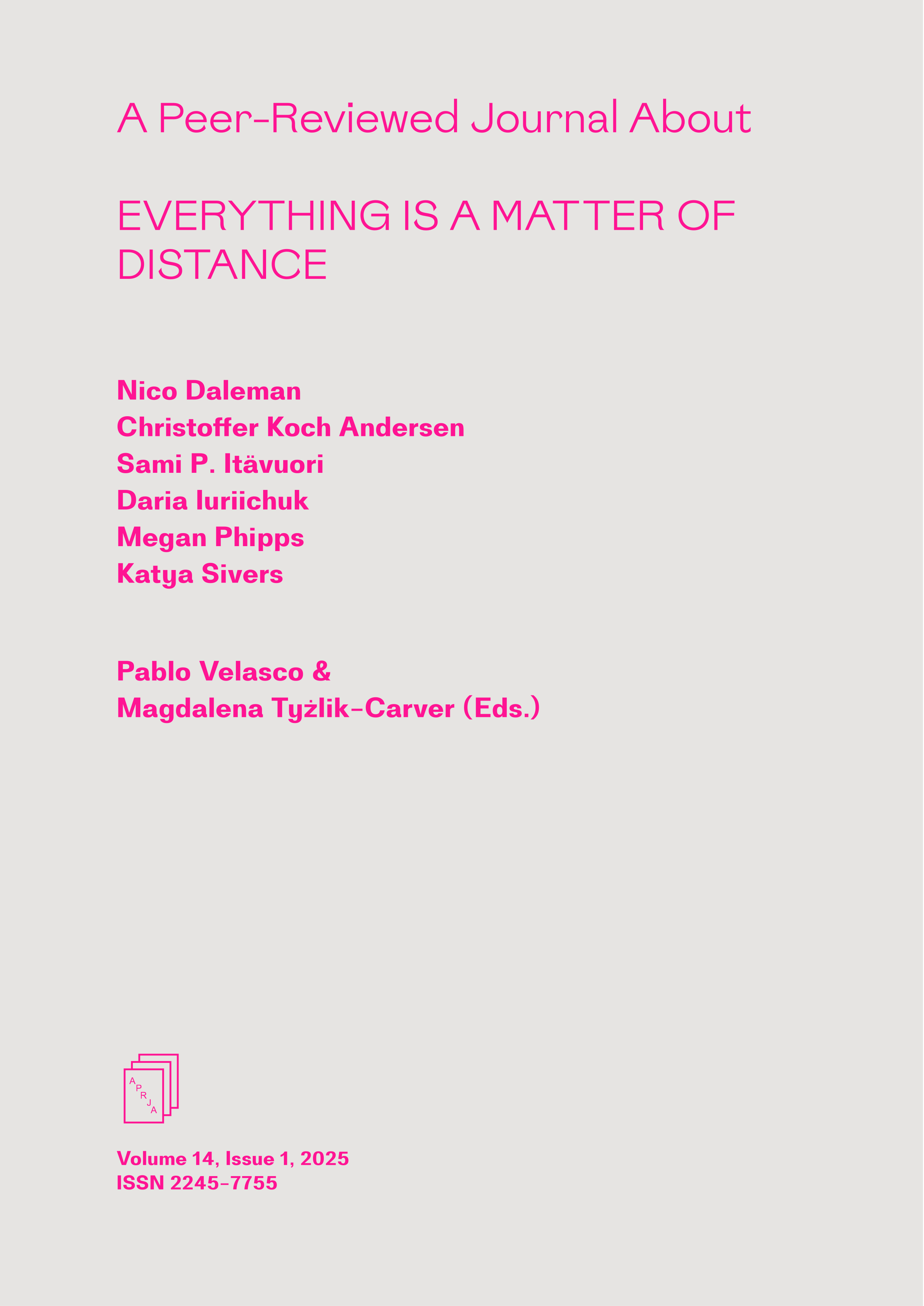Folded Distance
Towards A Techno-Ontology Of Distributed Aesthetics
DOI:
https://doi.org/10.7146/aprja.v14i1.160269Keywords:
folded distance, techno-ontology, techno-aesthetics, distributed intimacy, VJ culture, recursive mediaAbstract
This article proposes "folded distance" as a critical conceptual framework to theorise techno-ontological aesthetics in the context of networked media and digital culture. In contrast to representational approaches, it introduces the notion of technoontology—a mode of analysis that foregrounds the operational, recursive, and affective infrastructures of networked life. Through close examination of VJ Peter Rubin’s live-mixing practices and the immersive architectures of techno-events, such as Berlin’s Mayday and Chromapark, the article elucidates how media systems enact distributed sensation, rhythmic entrainment, and modulated proximity. Folding, in this context, is theorised as both spatial and affective topology through which subjectivity, perception, and relation are reconfigured. The recursive logics of technical media are shown to generate aesthetic conditions where distance is infrastructurally mediated rather than spatially determined. This study contributes to debates in media theory by articulating a techno-aesthetic ontology of sensation—one that interrogates how recursive systems shape the lived realities of digital and post-digital culture.
Downloads
Published
Issue
Section
License
Copyright (c) 2025 Megan Phipps

This work is licensed under a Creative Commons Attribution-NonCommercial-ShareAlike 4.0 International License.
Copyrights are held by the individual authors of articles.
Unless stated otherwise, all articles are published under the CC license: ‘Attribution-NonCommercial-ShareAlike’.
The journal is free of charge for readers.
APRJA does not charge authors for Article Processing Costs (APC)


